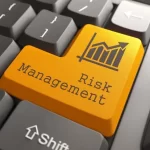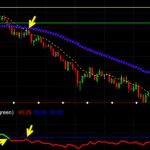Choosing the right trading assets is a critical decision that can significantly impact your success as a trader. With a multitude of financial instruments available across various markets, it’s essential to carefully consider your trading goals, risk tolerance, and market knowledge when selecting assets to trade.
In this comprehensive guide, we’ll explore valuable tips and strategies to help you choose the right trading assets effectively and enhance your trading performance.
1. Understand Your Trading Objectives
Before diving into the world of trading, it’s essential to define your trading objectives clearly. Are you looking to generate short-term profits through day trading, or are you focused on long-term wealth accumulation through investing? Understanding your goals will help you determine the most suitable trading assets and timeframes to achieve them.
2. Assess Your Risk Tolerance
Risk tolerance plays a crucial role in determining the types of assets you should trade. If you have a low risk tolerance, you may prefer to trade less volatile assets such as blue-chip stocks or major currency pairs.
On the other hand, if you’re comfortable with higher levels of risk, you may explore trading options, cryptocurrencies, or emerging market stocks.
3. Evaluate Market Conditions
Take the time to evaluate current market conditions and trends to identify opportunities and potential risks. Different assets perform differently under various market conditions, so it’s essential to choose assets that align with the prevailing market environment.
For example, during periods of economic uncertainty, safe-haven assets like gold and government bonds may outperform riskier assets like stocks or commodities.
4. Diversify Your Portfolio
Diversification is a fundamental principle of successful trading and investing. By spreading your investments across different asset classes, sectors, and geographical regions, you can reduce the overall risk of your portfolio and improve your chances of achieving consistent returns.
Consider diversifying your portfolio with a mix of stocks, bonds, commodities, currencies, and other financial instruments to balance risk and reward.
5. Conduct Thorough Research
Before trading any asset, conduct thorough research to understand its fundamentals, market dynamics, and historical performance. Analyze factors such as supply and demand dynamics, macroeconomic trends, geopolitical events, and company fundamentals to assess the potential risks and rewards of trading a particular asset.
Utilize reputable sources of information such as financial news outlets, analyst reports, and economic data releases to inform your trading decisions.
6. Stay Informed About Market News
Stay informed about market news and developments that may impact the assets you’re trading. News events such as central bank announcements, economic data releases, geopolitical tensions, and corporate earnings reports can have significant effects on asset prices and market volatility.
Stay updated on relevant news and be prepared to adjust your trading strategy accordingly to capitalize on emerging opportunities or mitigate potential risks.
7. Monitor Liquidity and Volatility
Consider the liquidity and volatility of the assets you’re trading, as these factors can impact trading costs, execution speed, and overall trading experience. Highly liquid assets such as major currency pairs and blue-chip stocks tend to have tighter bid-ask spreads and lower transaction costs, making them more attractive for short-term traders.
Volatile assets, on the other hand, offer greater profit potential but also carry higher levels of risk, so it’s essential to manage your positions accordingly.
8. Utilize Technical and Fundamental Analysis
Utilize both technical and fundamental analysis techniques to analyze potential trading opportunities and make informed decisions.
Technical analysis involves studying price charts, patterns, and indicators to identify trends and entry/exit points, while fundamental analysis involves analyzing economic data, company financials, and market fundamentals to assess the intrinsic value of an asset.
By combining these approaches, you can gain a comprehensive understanding of the market and improve your trading accuracy.
9. Start with Demo Trading
If you’re new to trading or exploring a new asset class, consider starting with demo trading to practice your trading strategies and gain experience without risking real capital.
Most online brokers offer demo accounts with virtual funds that allow you to simulate real-market conditions and test different trading strategies in a risk-free environment. Use demo trading as a learning tool to refine your skills and build confidence before transitioning to live trading.
10. Seek Professional Guidance
If you’re unsure about which trading assets to choose or how to develop an effective trading strategy, consider seeking professional guidance from experienced traders, financial advisors, or mentors.
Join trading communities, attend seminars or webinars, and seek out educational resources to learn from seasoned professionals and gain valuable insights into the world of trading. By leveraging the expertise of others, you can accelerate your learning curve and make more informed trading decisions.
Conclusion
Choosing the right trading assets is a crucial step in achieving success in the financial markets. By understanding your trading objectives, assessing your risk tolerance, evaluating market conditions, diversifying your portfolio, conducting thorough research, staying informed about market news, monitoring liquidity and volatility, utilizing technical and fundamental analysis, starting with demo trading, and seeking professional guidance, you can select assets that align with your goals and trading style and maximize your chances of achieving consistent profits.
Remember that trading is a journey of continuous learning and adaptation, so stay disciplined, stay informed, and be prepared to adjust your strategy as needed to stay ahead of the curve and succeed in the dynamic world of trading.













